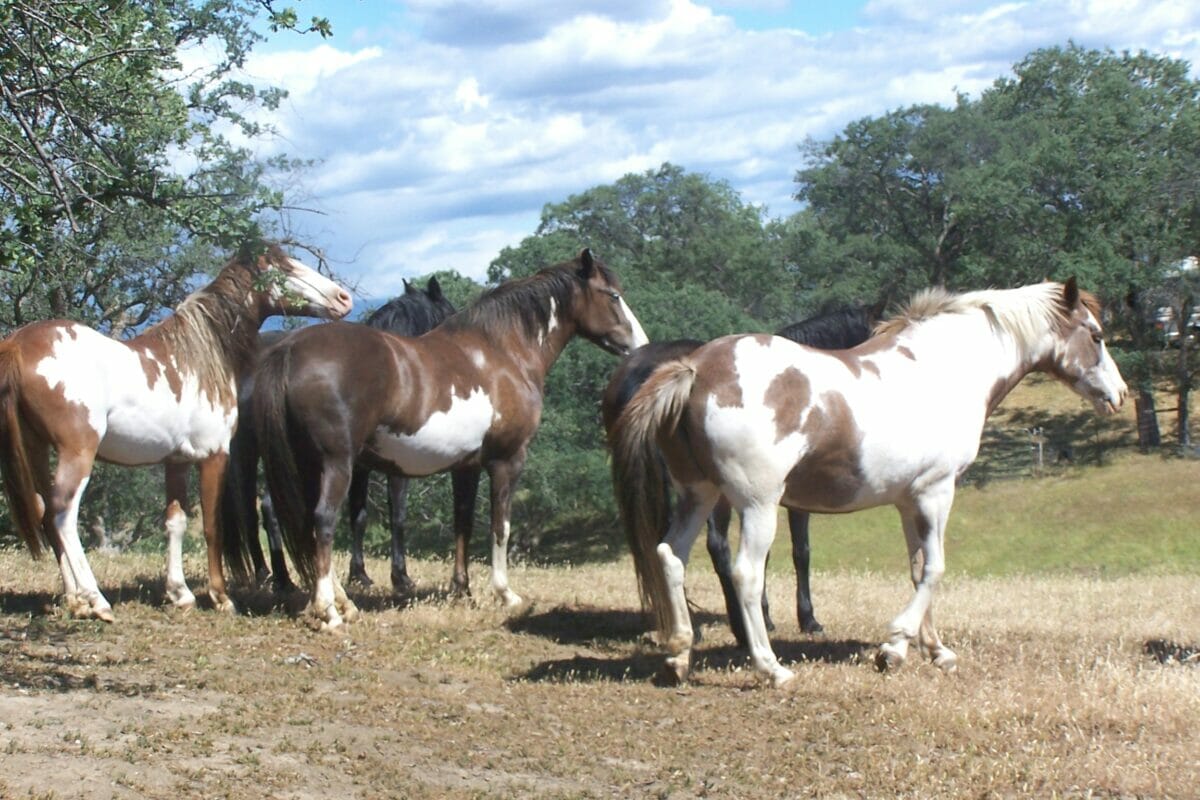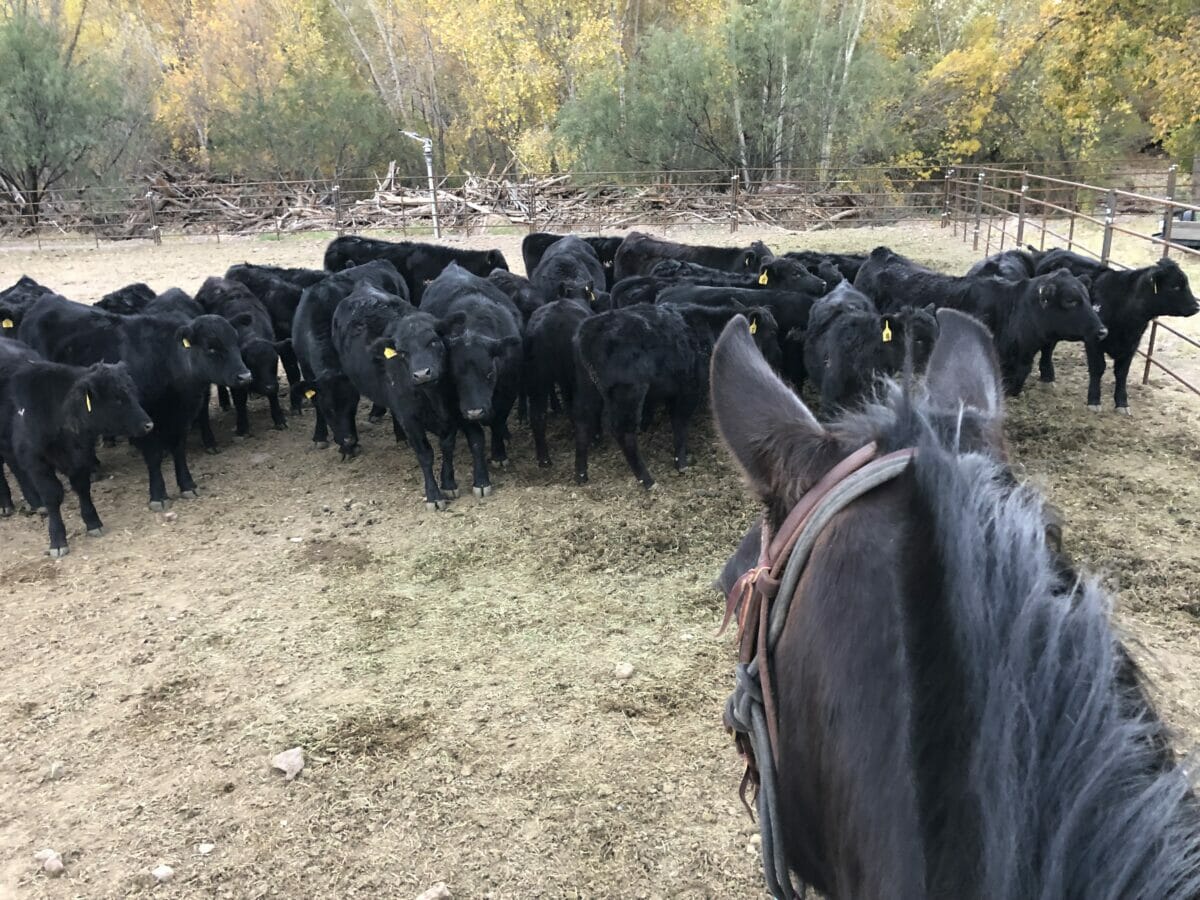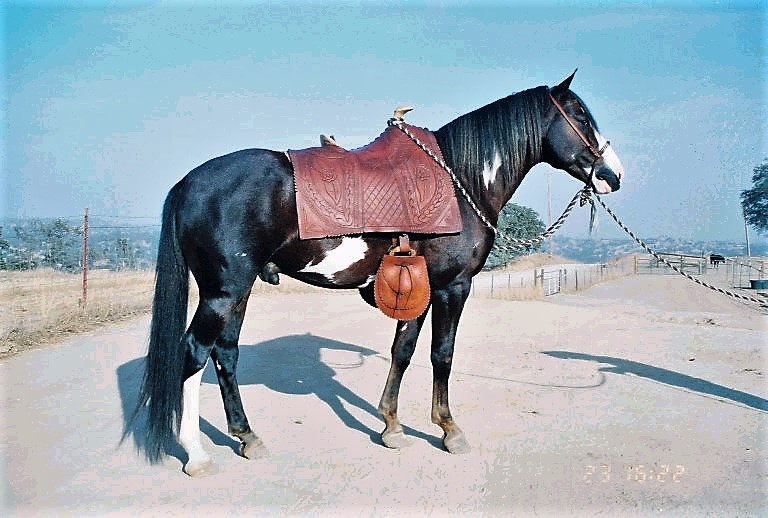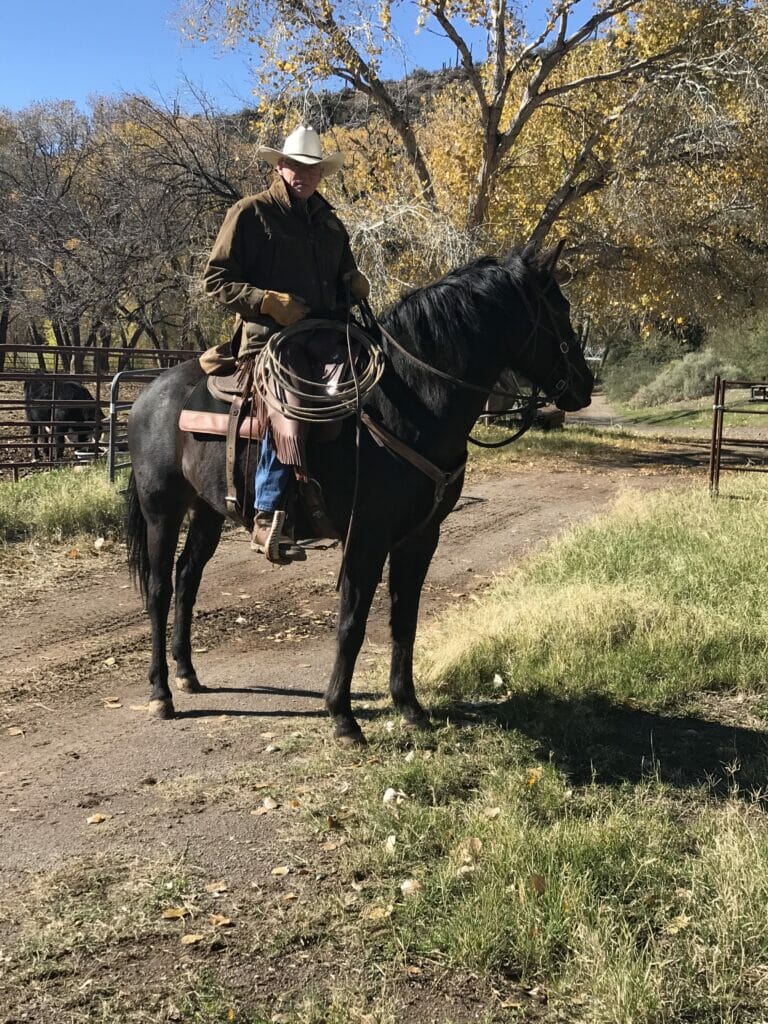Wilbur-Cruce Horses: The Biggest Secret in Ranching
Quick to learn and eager to please, the rare Spanish colonial horses remain untouched by interbreeding. But their population is on the decline.
Wilbur-Cruce Horses: The Biggest Secret in Ranching
Quick to learn and eager to please, the rare Spanish colonial horses remain untouched by interbreeding. But their population is on the decline.

Wilbur-Cruces are useful for plowing, draft, livestock and transport. courtesy of Robin Collins.
Heidi Collings grew up with horses, but she was blown away by her first encounter with the Wilbur-Cruce, the only pure breed of rancher horse descended from Spanish colonial times. In 1995, a friend brought an untrained colt to her Arizona ranch. Collings threw a saddle on him, his first. An hour later, he was moving cattle in the pens. He pushed them about as though he had done so his entire life. No horse she had ever ridden before had done that.
“He handled everything like he had grown up with it,” Collings recalls. “He was very steady, with a real work ethic. He did whatever we asked him.”
She acquired her own Wilbur-Cruces, and the cowboys working for her found the horses had amazing endurance. Quarter Horses, the most popular breed on ranches, need to rest following a hard day. Not Wilbur-Cruces. They are ready for action the next morning.
“These horses spoil you,” says Collings. “You get hold of these and you don’t want to deal with anything else.”
Other owners echo her sentiments. The Wilbur-Cruces are quick learners and eager to please. They are loyal to their human partners—the closest thing to working dogs. They don’t alarm livestock and react calmly to ropes swung over them. They’re reliable and always on call. Although on the smaller side—measuring on average 14 hands, or 56 inches, high—they are extremely hardy.

“They’re perfect for farms and working cattle,” says Robin Collins, who owns around 40 Wilbur-Cruces near Fresno, California.
But there’s a hitch. The Wilbur-Cruces are nearly extinct. At most, 160 remain, all in the US, despite there being a dedicated preservation attempt by private individuals. That’s because so few people know about the animals and resources are scarce. Horses are costly to maintain, and breeders need money, as well as eager buyers, to bring more into the world.
A handful of other strains of Spanish colonial horses exist in North America, such as the Choctaw and Baca. But unlike mustangs, which are feral horses that are often mixed with other types, the Wilbur-Cruces have the genetics of original Iberian horses, untouched by interbreeding.
The Wilbur-Cruces descend from a herd brought from Spain to Mexico in 1681 by Padre Kino, a missionary rancher. In 1885, an American named Ruben Wilbur brought 25 mares and stallions to his rugged desert ranch in Arizona where their descendants remained isolated for another century. When the ranch was sold in 1990, 77 horses were donated to what is now known as the Livestock Conservancy, which seeks to save endangered heritage breeds. Collins took many of the equines and other enthusiasts joined her effort to preserve the bloodline. But numbers have fallen as funding dried up and breeders aged out.

That’s a shame, says Phillip Sponenberg, a genetics professor from the Virginia-Maryland College of Veterinary Medicine who has studied Wilbur-Cruce horses for 25 years.
He says the varied DNA that created such a fine working horse could prove useful for future generations. They can do a range of activities, unlike modern lines that are bred for one purpose, such as racing or jumping. Wilbur-Cruces were always used for plowing, draft, livestock and transport.
Sponenberg also stresses the cultural heritage of the American West, where Spanish breeds predominated until the 1800s. “We save historic buildings, yet these are a living record of human endeavor,” he says.

Sandra Esposito believes more people would own the horses if they saw them in action. She uses her Wilbur-Cruces to go camping and pack supplies as a forest volunteer in California’s Sierra mountains. She finds them to be the most grounded and intelligent horses. One even figured out how to trot around barrels and poles by watching others. “They’ll see a problem and think about it and say, ‘We’ve got this.’”
They are also remarkably agile, says Rear Admiral Steve Turcotte. A Wilbur-Cruce gelding is the go-to rope horse on his craggy cattle farm in Arizona. The steed goes shoeless through the Aravaipa canyons. “These horses scramble up rocks and cliffs that I wouldn’t hike on,” he says. “My farrier says they’ve got the best feet he’s ever seen.”
The downside? Wilbur-Cruce horses get bored without a task at hand. They don’t like circling in a ring without a purpose. And their affection can get in the way. Owners say it’s hard to clean up manure because they’re always at your elbow, asking for a rub.

Still, conservationists persevere, working to get the word out. The Spanish Barb Horse Association does education about this rare strain and others. It advertises breeders and horses for sale. Turcotte offers his black stallion, Amigo, to mate for free. But business is largely word of mouth, and few Wilbur-Cruce foals are born each year.
At 76, Collins worries about what will happen when she can no longer care for her Rancho del Sueno sanctuary. The pandemic has further complicated that. Vet bills cost $35,000 a year, the price of feed has doubled and she can’t do educational programs like before.
“These horses were instrumental in the development of humanity,” she says. “We need to keep them alive.”
Follow us
This work is licensed under a Creative Commons Attribution-NoDerivatives 4.0 International License.
Want to republish a Modern Farmer story?
We are happy for Modern Farmer stories to be shared, and encourage you to republish our articles for your audience. When doing so, we ask that you follow these guidelines:
Please credit us and our writers
For the author byline, please use “Author Name, Modern Farmer.” At the top of our stories, if on the web, please include this text and link: “This story was originally published by Modern Farmer.”
Please make sure to include a link back to either our home page or the article URL.
At the bottom of the story, please include the following text:
“Modern Farmer is a nonprofit initiative dedicated to raising awareness and catalyzing action at the intersection of food, agriculture, and society. Read more at <link>Modern Farmer</link>.”
Use our widget
We’d like to be able to track our stories, so we ask that if you republish our content, you do so using our widget (located on the left hand side of the article). The HTML code has a built-in tracker that tells us the data and domain where the story was published, as well as view counts.
Check the image requirements
It’s your responsibility to confirm you're licensed to republish images in our articles. Some images, such as those from commercial providers, don't allow their images to be republished without permission or payment. Copyright terms are generally listed in the image caption and attribution. You are welcome to omit our images or substitute with your own. Charts and interactive graphics follow the same rules.
Don’t change too much. Or, ask us first.
Articles must be republished in their entirety. It’s okay to change references to time (“today” to “yesterday”) or location (“Iowa City, IA” to “here”). But please keep everything else the same.
If you feel strongly that a more material edit needs to be made, get in touch with us at [email protected]. We’re happy to discuss it with the original author, but we must have prior approval for changes before publication.
Special cases
Extracts. You may run the first few lines or paragraphs of the article and then say: “Read the full article at Modern Farmer” with a link back to the original article.
Quotes. You may quote authors provided you include a link back to the article URL.
Translations. These require writer approval. To inquire about translation of a Modern Farmer article, contact us at [email protected]
Signed consent / copyright release forms. These are not required, provided you are following these guidelines.
Print. Articles can be republished in print under these same rules, with the exception that you do not need to include the links.
Tag us
When sharing the story on social media, please tag us using the following: - Twitter (@ModFarm) - Facebook (@ModernFarmerMedia) - Instagram (@modfarm)
Use our content respectfully
Modern Farmer is a nonprofit and as such we share our content for free and in good faith in order to reach new audiences. Respectfully,
No selling ads against our stories. It’s okay to put our stories on pages with ads.
Don’t republish our material wholesale, or automatically; you need to select stories to be republished individually.
You have no rights to sell, license, syndicate, or otherwise represent yourself as the authorized owner of our material to any third parties. This means that you cannot actively publish or submit our work for syndication to third party platforms or apps like Apple News or Google News. We understand that publishers cannot fully control when certain third parties automatically summarize or crawl content from publishers’ own sites.
Keep in touch
We want to hear from you if you love Modern Farmer content, have a collaboration idea, or anything else to share. As a nonprofit outlet, we work in service of our community and are always open to comments, feedback, and ideas. Contact us at [email protected].by Judith Matloff, Modern Farmer
January 22, 2022
Modern Farmer Weekly
Solutions Hub
Innovations, ideas and inspiration. Actionable solutions for a resilient food system.
ExploreExplore other topics
Share With Us
We want to hear from Modern Farmer readers who have thoughtful commentary, actionable solutions, or helpful ideas to share.
SubmitNecessary cookies are absolutely essential for the website to function properly. This category only includes cookies that ensures basic functionalities and security features of the website. These cookies do not store any personal information.
Any cookies that may not be particularly necessary for the website to function and are used specifically to collect user personal data via analytics, ads, other embedded contents are termed as non-necessary cookies.
The Packard Foundation, Former Mrs. Bezos, and former Mrs. Gates need to step up. His is just the kind of historic and natural preservation that they support.
Interesting! I am not a horse person, but why are the vet bills so expensive. Moving to land in Costa Rica and wanting to learn more.
You have peeked my curiosity and I am interested in getting more information. What size are they? How would one get one or two of them? If I were to consider breeding them to help in their existence, how would I go about that? I have a farm in the middle of Woodford County, Kentucky (center of the Bluegrass and thoroughbred capital) and it would be a good home for them I would think. Please connect with me via contact info below. My phone no. is 859-207-8683. Best regards, Craig
I would love to acquire a stallion and two mares. Where would I find these horses for sale? I’ve not been able to find a breeder with horses in an online search.
Tell us more. I am a Lippit Morgan man but find this fascinating.
I’ve never heard of this breed of horse. Where can I find out more about them?